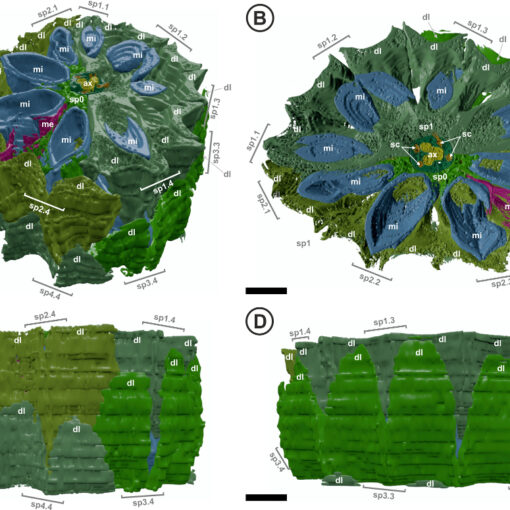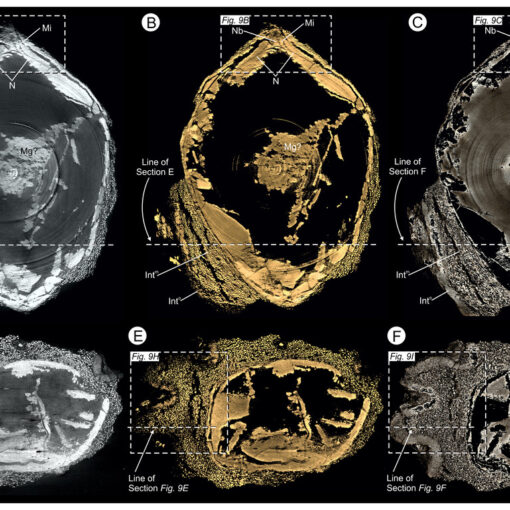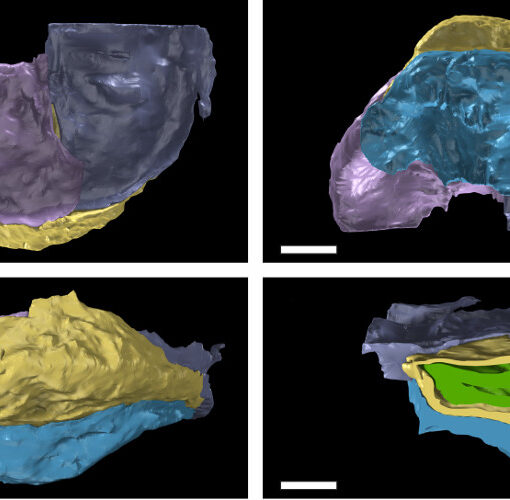Type:
Peer Reviewed Research Paper
Journal:
Journal of Asian Earth Sciences
Year:
2013
Authors:
, Hilton J.
DOI
Abstract:
The medullosan pteridosperm ovule Stephanospermum Brongniartis a well-known component of Carboniferous aged coal-ball and siderite nodule floras from North America and Europe but also occurs in the Permian floras of Cathaysia where it is represented by the Lopingian (late Permian) aged species Stephanospermum trunctatum (Li) Wang et al. (2009) from coal-balls in the Wangjiazhai Formation in Southern China. We provide a detailed emendation of S. trunctatum and illustrate it comprehensively for the first time, and document an additional specimenfrom the Wangjiazhai Formation coal-ball assemblage that we assign to Stephanospermum shuichengensissp. nov. S. shuichengensis is distinguished from S. trunctatumby the absence of apical teeth in the sclerotesta and non-obovate base. The two species ofStephanospermum from theWangjiazhai Formation are important as they extend the stratigraphic and geographical range of the genus from the Pennsylvanian of Euramerica into the Lopingian of Southern China, and demonstrate thatthe genus persisted in wetland, peat forming environments in the run up to the end-Permian mass extinction event. The 44 MY stratigraphic discontinuity between the Euramerican and the Cathaysian species, here named the Stephanospermum gap, leads us to infer that the genus was likely to have occurred in the Pennsylvanian–Permian successions of southern Russia and northern China that are geographically and stratigraphically intermediate to the known occurrences but from which the genus has yet to be discovered. Medullosan pteridosperms appear to have become extinct at or immediately prior to the Permian-Triassic boundary that coincides with the Permo–Trias mass extinction event; although the exact causes of this loss in plant diversity remains unknown, a response to regional climatic drying is likely to have been a contributing factor.




